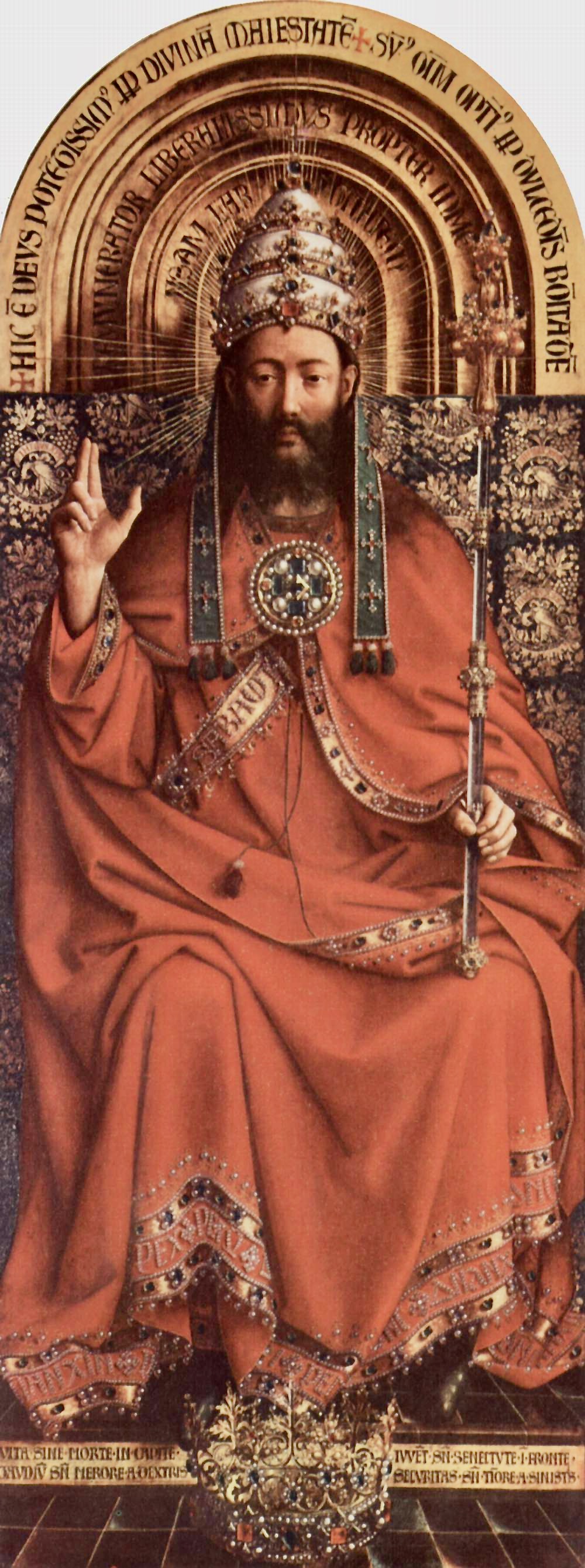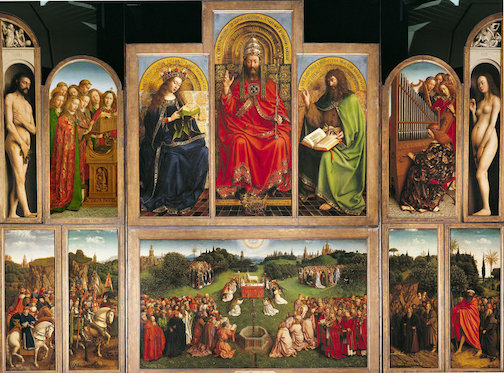As George Bailey pleads for the Lord’s help, on a snow-covered bridge in Bedford Falls, he little suspects what is actually going on behind the scenes. The machinations of Henry F. Potter, which have brought George to his knees, in fact, have been the very means the Lord has chosen to show him that he really has a precious, needed, and irreplaceable life.
This truth, vividly portrayed in Frank Capra’s classic film It’s a Wonderful Life, is no less apparent on the real-life stage of the divine drama. Throughout Salvation History, in fact, the Lord chooses to allow the thugs to get the upper hand, only to prove His sovereignty over them. When He allows our strength to appear overwhelmed by likes of a Goliath, He is actually saying, “Now, watch Me work!”
The Lord says to us in such moments, “Be still, and know that I am God!” (Psalm 46:10) He does not say: “Be still, and know that I am trying my best,” or “Be still, and know that I used to do incredible things, but it’s been a while.” No. He says: “Know that I am GOD.”
And herein lies the unfathomable mystery of God: He uses the seemingly incontestable and invincible control of a worldly power to manifest His superior strength.
The Lord says to Pharaoh, “This is why I have raised you up, to show my power through you that my name may be proclaimed throughout the earth.” (Romans 9:17)
Seen through this lens, the deadly giants and insurmountable obstacles lose their mystique and threat. Intimidating as they may seem, they are only bit players in God’s salvific plan, used by the Lord to accomplish His will.

The bit players, “one(s) that will do,” Prufrock says, “to swell a progress, start a scene or two,” – Pharaoh and Goliath and Potter and Pilate – will not make the final curtain call. The great action, the memorable and defining moment in the divine drama, is accomplished by God, the protagonist, the Almighty Himself.
He parts the Red Sea and delivers the Israelites not in spite of Pharaoh, but through him. Unstoppable as they may appear, the Egyptians and their chariot forces are being used by God to accomplish His plan. “I will so harden Pharaoh’s heart that he will pursue them. Thus I will receive glory through Pharaoh and all his army, and the Egyptians will know that I am the LORD.” (Exodus 14:4)
And God does just that. He makes clear through them exactly who commands the seas and the destinies of men; we need only watch Him work. “The Lord Himself will fight for you;” Moses declares, “you need only to be still.” (Exodus 14:14)
At Cana, likewise, the obstacles overwhelm. The supply runs out and they have no more wine. And yet, the Lord’s miracle is possible because they have come to the end of their resources.
The Blessed Mother, in this moment, points us to the way. In her wisdom and faith she is confident of the miracle, advising us to “do whatever He tells you.” (John 2:5) The stewards fill the jars with water, allowing themselves to be used to accomplish His greater plan. The Lord has not failed; He has kept the best until last. He uses the crisis to manifest His power, and as we watch Him work, water becomes wine.
The confidence that the power of God will ultimately triumph is not an excuse for complacency or laziness before the challenges of daily life. It is rather the unfailing source of new courage and new energy in meeting those challenges, no matter how impossible they may seem. Trust in God’s promises inspires ever greater engagement in His works.
And when His power is manifested, the nature of God is revealed. With mystical transformation, the “it is finished” of the Crucifixion becomes the “it is accomplished” of the Resurrection. The tomb is empty scenery; He sits upon His Throne. His death is the means through which God’s greatness is unequivocally manifested.
If we apply logic, and follow God’s lead, the current crisis in the Church is not a problem that caught Him off guard, for which He has no answer or solution. He is not wondering what He will do, or how to cope with the counterfeits and the carnies, come to town peddling the same theological shtick, with a thin veneer of new paint, which they have been hawking for the past forty years.
On the contrary, He already has the response for this moment when the divine life of the Church seems to have run dry. He allows this troubled moment in the life of the Church only to manifest His power; to show, clearly and unequivocally, that the Church and Her divine mission are anointed by His eternal life.
Treading the path that He has trod, the Church must suffer her own Passion, with Christ, at the hands of the thugs. As He delivered Himself into the power of desperate men and died on Calvary, His Church will be handed over as well. The trial will shake the faith of many, and sorely test our mettle, but the gates of Hell will not prevail.
Christ delights in overcoming the absolute powers and levelling the lowlifes. He has done it before, and He will do it again.
The Victory has already been won. He gives the stage to the bit players, momentarily, to show us, definitively, that He is God. The Almighty Himself is the protagonist. Stand firm, be still, and watch His denouement.
*Image: Christ the King (a.k.a. The Almighty or God the Father)by Jan van Eyck, c. 1425 [St. Bavo’s Cathedral, Ghent, Belgium]. This is the Deisis (representation of Christ in majesty), central panel in the inner section of the Ghent Altarpiece.
















